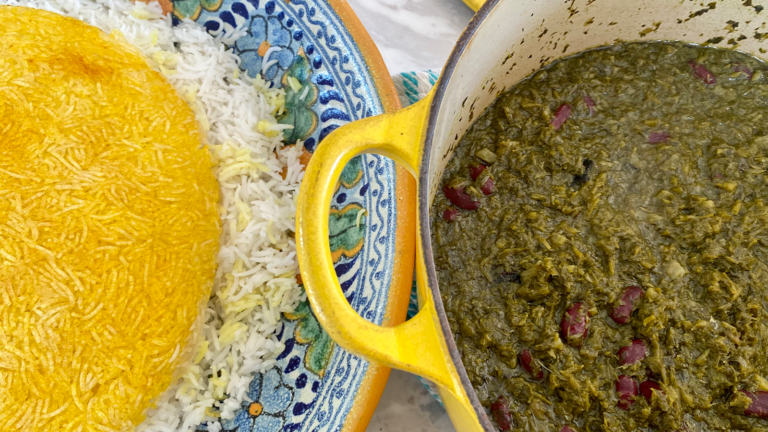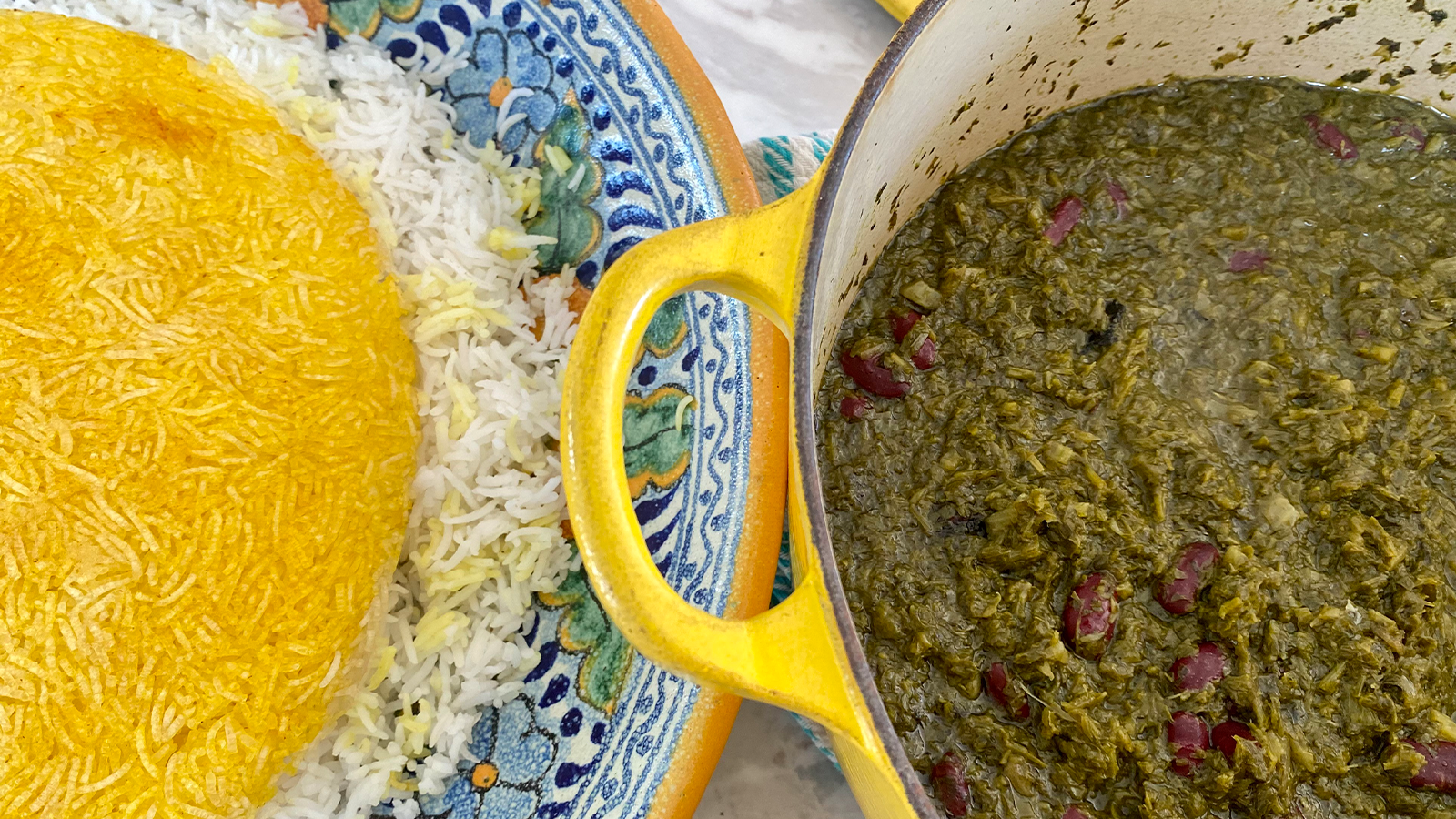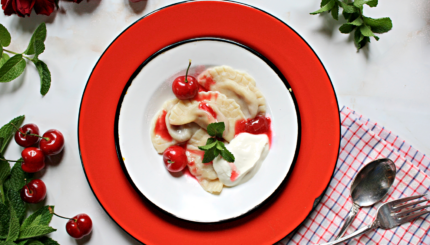Persian cuisine is known for its mountains of basmati rice, an affinity for puckeringly sour flavors and its use of fresh herbs not just as a seasoning, but as a main ingredient. Ghormeh sabzi brings these all together. A long-cooked stew that uses fragrant herbs to make up most of its bulk, it uses dried limes to give it a deep, funky sourness.
Dried limes, known in Persian as limoo amani, are whole limes that are dried in the sun until their skin is hard and has taken on a brown or black color. They have an intense, savory citrus flavor. Whether you remove the limes before serving is a matter of personal preference; I do not like eating them, but some people add a little bit of lime to each bite as they eat.
Classically, ghormeh sabzi is made with pieces of beef, which become fork-tender during the long braise and add a rich unctuousness to the stew. However, it’s a satisfying dish even without the meat: the kidney beans in the dish provide protein, and served over steamed basmati rice – preferably with the irresistible saffron-hued crust known as tahdig that develops at the bottom of the pot – it’s a perfectly filling meal on its own, and an impressive addition to a Shabbat dinner spread.
The herbs used can vary from kitchen to kitchen. My family’s rendition is a classic recipe with a slight variation: We like to add a bit of spinach to give some body to the finished stew. You certainly don’t have to be exact with herb measurements at all — this is a home-cooked meal, and the flavors will all meld together beautifully as it cooks, regardless of slight variations in proportions.
The Nosher celebrates the traditions and recipes that have brought Jews together for centuries. Donate today to keep The Nosher's stories and recipes accessible to all.
Notes:
- You can find tareh (sometimes called Persian chives, Persian leeks or tara) in Middle Eastern markets. If you’re unable to find it, just replace it with more scallions.
- You can find dried limes (sometimes called black limes or limoo amani) in the spice section of Middle Eastern markets or online. If you can’t find them, add ¼ cup fresh lime or lemon juice to the pot along with the water, and adjust sourness with more lemon or lime juice after cooking.

Vegan Ghormeh Sabzi
A fragrant, herbaceous Persian stew.
- Total Time: 2 hours 20 minutes
- Yield: Serves 8-10, with rice
Ingredients
- 200 g Persian leeks/tareh (2 bunches)
- 200 g scallions (1 bunch)
- 300 g flat-leaf parsley (3 bunches)
- 70 g fresh fenugreek (1 bunch)
- 100 g fresh spinach
- 6 Tbsp neutral oil, such as grapeseed, divided
- 1 tsp ground turmeric
- 1 large onion, diced
- 1 Tbsp dried fenugreek
- 4–6 dried limes
- 1 Tbsp salt
- 1 tsp black pepper
- 425 g canned or cooked kidney beans, drained (around 2 cups, or 1 (15 oz) can)
Instructions
- Remove root ends from scallions and any thick, woody stems from herbs. In a food processor, finely mince scallions, herbs and spinach in batches. Place minced herbs in a large bowl as you go.
- In a large pot or Dutch oven, add 2 Tbsp oil and the turmeric and onion. Saute over medium-high heat for about 10 minutes, stirring occasionally, until onion softens and becomes golden brown, lowering heat if it starts to burn. Remove onion, along with any remaining oil, from the pot and wipe out any burnt bits.
- In the same pot, fry minced herbs with remaining 4 Tbsp oil over medium heat, stirring occasionally, until the aroma of frying herbs rises and herbs have softened and darkened in color, about 20 minutes. If herbs are dry or begin to burn, add a bit more oil.
- Meanwhile, with a fork, carefully poke a few holes into each dried lime.
- Add onion with its oil, dried limes, salt, pepper and 5 cups water to herbs in the pot, and stir to combine. Bring to a boil over high heat, then reduce heat and simmer, covered, for 90 minutes.
- In the last 20 minutes or so of cooking, stir in kidney beans. Check consistency of stew: It should come together in a uniform texture, without too much standing water. If it’s too watery, simmer uncovered until it thickens a bit. If it’s too thick, add about ¼ cup of water. Adjust seasoning.
- Serve over steamed basmati rice.
Notes
- You can find tareh (sometimes called Persian chives, Persian leeks or tara) in Middle Eastern markets. If you’re unable to find it, just replace it with more scallions.
- You can find dried limes (sometimes called black limes or limoo amani) in the spice section of Middle Eastern markets or online. If you can’t find them, add ¼ cup fresh lime or lemon juice to the pot along with the water, and adjust sourness with more lemon or lime juice after cooking.
- Prep Time: 20 minutes
- Cook Time: 2 hours
- Category: Vegetarian
- Method: Stovetop
- Cuisine: Persian



